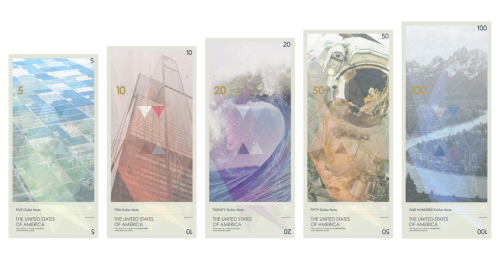Reading and Blog Post: U.S. Money Redesign
 Tuesday, October 28, 2014 at 12:19PM
Tuesday, October 28, 2014 at 12:19PM 
Please visit this article on theverge.com about graphic designer Travis Purrington's design exercise on redesigning our money. Once you have finished reading it, write a blog entry about your thoughts on the article.
Requirements
- Please include at least one picture of Purrington's design.
- Include your thoughts on:
- What do you like about the design?
- What do you think needs changing in his design?
- Where did Purrington get his inspiration for his design?
- What things did Purrington remove from the artwork on money?
- What things from our current money did he work into his design? How?
- Do you see any things did Purrington did to help people with limited sight and the blind?
- Where do you notice Purrington using SCALE or INVERSION?
- If you could design money, what would you make it look like?


